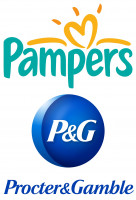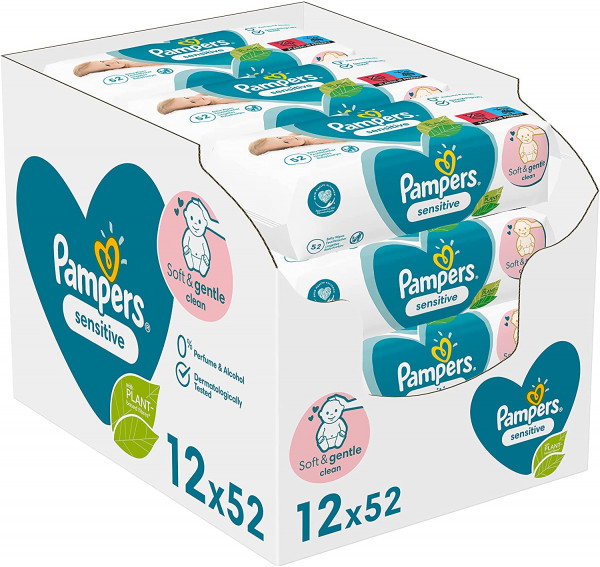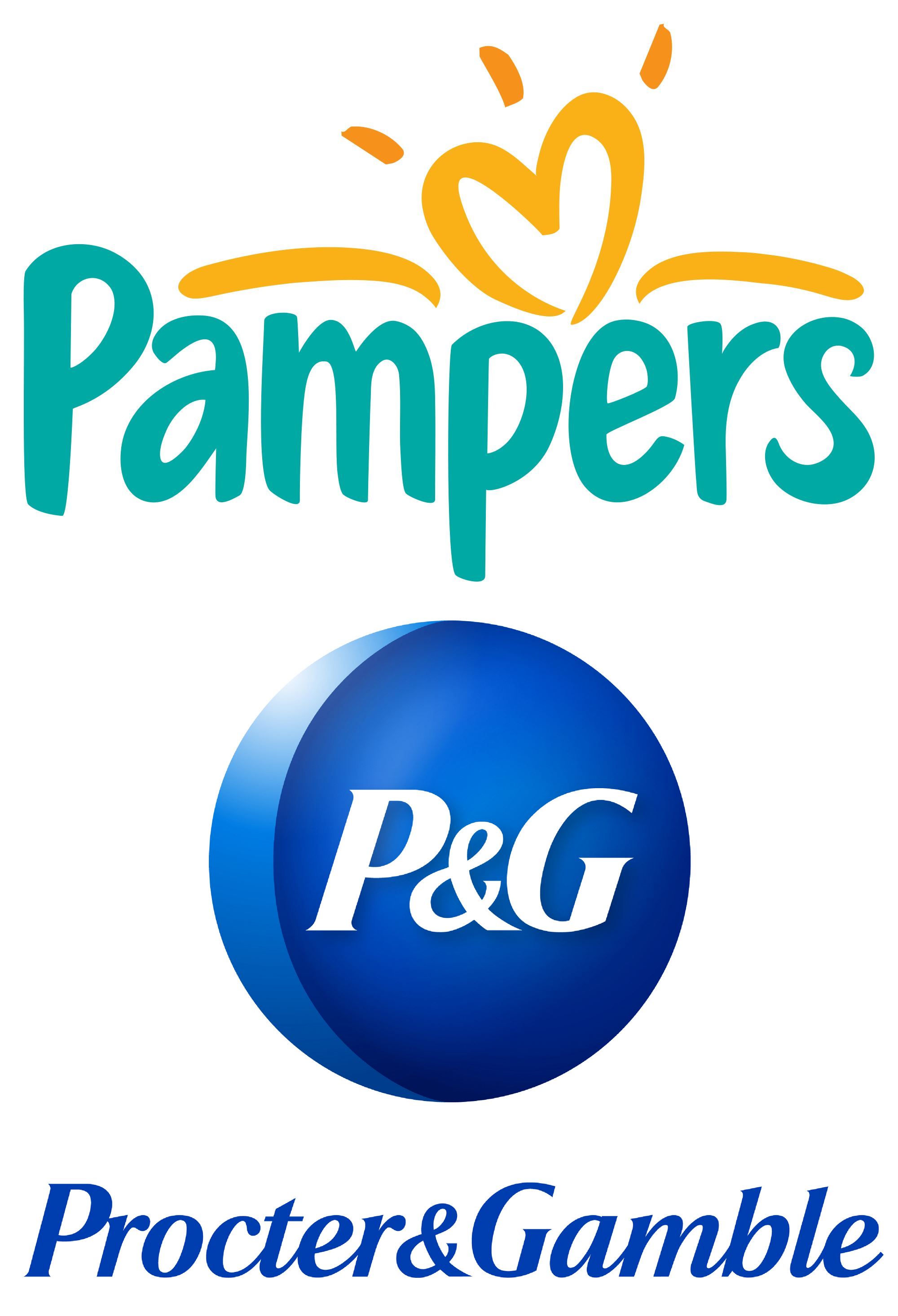*prices incl. VAT plus shipping costs
Ready to ship today,
Delivery time appr. 1-4 days²
- Order number: 240010
- best before: 21.07.2024
- EAN: 8001841041483
- advice: Um Erstickungs- und/oder Erdrosselungsgefahr zu vermeiden, bitte alle Verpackungsmaterialien von Babies und Kindern fernhalten.
- information: Entsorgen Sie bitte gebrauchte Tücher mit dem Hausmüll, nicht in die Toilette werfen.
Sanfte Reinigung mit erfrischendem Duft
Weich und stark für eine sanfte Reinigung: Die Pampers Sensitive Feuchttücher mit erfrischendem Duft verfügen über einen ausgewogenen Feuchtigkeitsgehalt, der ein sauberes Gefühl auf der Haut hinterlässt und gleichzeitig dazu beiträgt, den natürlichen pH-Wert aufrechtzuerhalten.
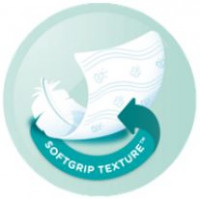 | 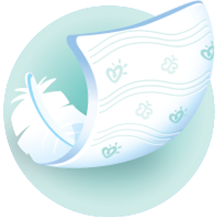 |
Soft Grip TextureDank der Soft Grip Texture von Pampers reinigen sie zarte Babyhaut noch sanfter. | Extra Stark15% stärker als Pampers Fresh Clean Feuchttücher, damit Sie jeder Situation gewachsen sind und zarte Babyhaut noch schonender pflegen. |
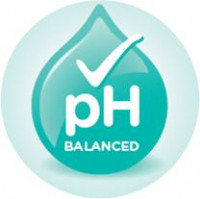 | 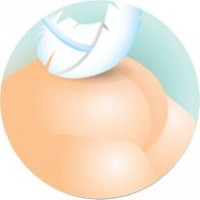 |
Hilft, den natürlichen pH-Wert der Haut wiederherzustellenMit den Pampers Sensitive Feuchttüchern wird die Haut Ihres Neugeborenen optimal mit Feuchtigkeit versorgt und gepflegt | Dermatologisch getestetDie Pampers Sensitive Feuchttücher bieten selbst bei empflindlicher Haut eine klinische nachgewiesene Hautverträglichkeit |
| Filling quantity (piece): | 624 |
| age group: | from birth |
| Shipping weight: | 4,365 kg |
| Manufacturer: | Procter & Gamble |
| Dimensions HxWxD (approx.): | 206x293x198 mm |
| product group: | wipes |
| brand: | Pampers |
| care products: | skin cleansing |
| Manufacturer address: | Procter & Gamble Service GmbH, Sulzbacher Straße 40 - 50, 65824 Schwalbach am Taunus, Deutschland |
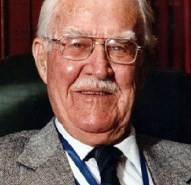
Founded by grandfather Victor Mills
Victor Mills was an American chemical engineer who, while working for Procter & Gamble Co., revolutionised child care by inventing the disposable nappy. He began work on this project in the 1950s, using his grandchildren as test subjects (born 1897, died 1 Nov 1997).
1950s
While the general view was that fathers knew best, Vic Mills believed that grandfathers knew a little bit better. This man, who happened to work for Procter & Gamble, was looking for an easier way to wrap his grandson. This was the birth of Pampers.
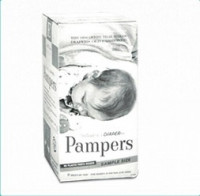
1950s
While the general view was that fathers knew best, Vic Mills believed that grandfathers knew a little bit better. This man, who happened to work for Procter & Gamble, was looking for an easier way to wrap his grandson. This was the birth of Pampers.
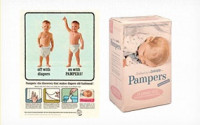
1960s
Some went to Woodstock. We went to department shops, supermarkets and drugstores across the country to sell a nappy that keeps babies dry and parents happy. The only problem was that nobody knew exactly where to put Pampers. Our nappies were so new that you could find them in the convenience department, food, stationery or even the medicine department.
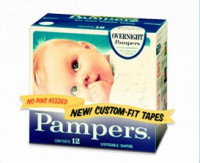
1970s
Bell-bottoms. Platform shoes. And glue. But not liquid. But adhesive tape. We replaced the classic needle with adhesive tape so that parents could take a look inside the nappy without getting stung. And while others were at the disco, we developed new models like Pampers Toddler Size, Extra Absorbent Daytime, Improved Newborn, Quilted Pampers and Premature Infant Size.
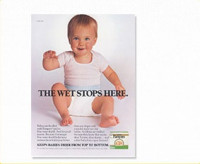
1980s
During this time everything revolved around excesses. Even nappies. We introduced value packs, because you can never have enough nappies. We also had other brilliant ideas: The first thin nappy made of absorbent gelling material, with elastic leg cuffs, tabs that could be fastened again, and softer inner material. We thought that our progress should also be a bit excessive.
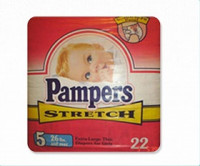
1990s
Forget money. Show me all the new Pampers. We developed the Ultra Dry Thins nappies, which drew moisture into the absorbent body and then absorbed even more liquid. We also invented the first stretch inserts, which made our nappies even more comfortable.
Today
"What will they think of next?" We're the ones who always come up with something. We have already made nappies that breathe - yes, exactly, breathe. Plus Premium and Baby-Dry nappies that keep baby's bottoms soft and smooth with a protective layer of care lotion. Grandpa Vic would be very proud of us.
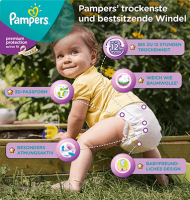
At Pampers we care about the healthy and happy development of babies. When discovering their world, playing and sleeping, a nappy must not be allowed to interfere. That's why our experts carefully select the materials for the nappies: They pay particular attention to safety and excellent performance to keep your pet's skin dry and healthy.
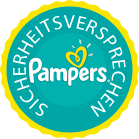
All Pampers products and materials are subject to the strictest safety and quality controls before they come into contact with baby's delicate skin. For Pampers, nothing is more important than the happy, healthy development of your baby. That's why we have our Pampers Safety Promise, where we disclose what is and isn't in our nappies, nappy pants and wet wipes. All products are made from materials that have been carefully tested and found to be safe. These are contained in most nappies and come into contact with 25 million babies worldwide every day.
The Pampers safety promise:![]() The happy, healthy development of babies is our top priority
The happy, healthy development of babies is our top priority![]() All Pampers products and materials are dermatologically tested and undergo strict safety, quality and performance checks before they come into contact with baby's skin.
All Pampers products and materials are dermatologically tested and undergo strict safety, quality and performance checks before they come into contact with baby's skin.
Our safety process: we ensure that our products are safe and gentle
Early in the development process of a new nappy, we select ingredients that can be safely used in a children's product. Pampers carefully checks all ingredients, materials, processes and end products at every stage of development to ensure they are safe for your baby. We follow the highest and most stringent global safety standards set by leading organisations around the world.
What we do not use in Pampers products
Many parents ask us which ingredients are not used in Pampers nappies and wet wipes. Here is a list of the substances we do not use*. If you have any questions about Pampers products, call Pampers Customer Service: Monday to Friday at 0800-2226555 (+49 800 222 6 555).
-
Bisphenol A (BPA)
-
Dioxins
-
disperse dyes
-
Elemental chlorine
-
Pampers does not add chlorine to nappies. We clean the fibres of the nappies in an elemental chlorine free process.
-
Ethanol / Alcohol
-
Pampers nappies, nappies and wet wipes are alcohol-free, which is generally understood to mean free of ethanol and isopropyl alcohol. These types of alcohol can dry out babies' sensitive skin.
-
Natural rubber latex
-
Heavy metals such as lead and mercury
-
Organotin compounds
-
Polycyclic aromatic hydrocarbons (PAH)
-
Pesticides
-
Parabens (see preservatives below)
-
Phenol
-
Polyvinyl chloride (PVC)
-
Special preservatives
-
Pampers does not use any preservatives in nappies. With our wet wipes we carefully select the preservatives to keep them clean and fresh. We do not use MIT or CMIT, formaldehyde or formaldehyde separators, parabens, quaternary ammonium compounds (QACs) and triclocarban or triclosan.
-
26 allergens from the European Cosmetic Decree for nappies and nappies
-
Pampers Premium Protection, Active Fit, Baby-Dry Diapers and Baby-Dry Pants Panty Diapers do not contain any of the following 26 fragrance ingredients listed in the European Union's Cosmetics Regulation which may cause allergic reactions in people susceptible to them. However, it should be noted that the majority of consumers will not experience adverse reactions when using these ingredients.
-
These 26 fragrance ingredients are Amyl cinnamal, benzyl alcohol, cinnamyl alcohol, citral, eugenol, hydroxycitronellal, isoeugenol, amyl cinnamyl alcohol, benzyl salicylate, cinnamal, coumarin, geraniol, hydroxyisohexyl-3-cyclohexenecarboxaldehyde, Aniseed alcohol, benzyl cinnamate, farnesol, butylphenylmethylpropional, linalool, benzyl benzoate, citronellol, hexyl cinnamal, limonene, methyl 2-octynoate, alpha-isomethylionone, Evernia Prunastri, Evernia Furfuracea.
* Some of these substances are present in the everyday environment and may therefore be present in traces in a wide range of household products, from nappies to drinking water.
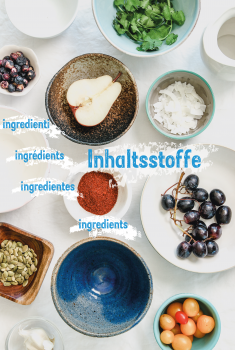 | Aqua, Citric Acid, PEG-40 Hydrogenated Castor Oil, Sodium |
Die Pampers-UNICEF-Partnerschaft
Seit 2006 hat die Partnerschaft von Pampers und UNICEF dazu beigetragen, Tetanus bei Müttern und Neugeborenen in 20 Ländern zu besiegen. So können Millionen von Babys ihr erstes Lächeln genießen!
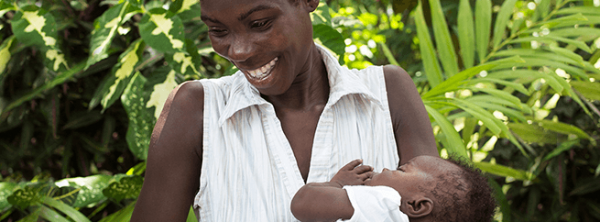 Pampers ging 2006 eine Partnerschaft mit UNICEF ein, um gemeinsam Tetanus bei Neugeborenen zu besiegen. Dabei handelt es sich um eine Infektionskrankheit, die jedes Jahr 34.000 Babys in vielen Teilen der Welt in den ersten Monaten ihr Leben kostet.
Pampers ging 2006 eine Partnerschaft mit UNICEF ein, um gemeinsam Tetanus bei Neugeborenen zu besiegen. Dabei handelt es sich um eine Infektionskrankheit, die jedes Jahr 34.000 Babys in vielen Teilen der Welt in den ersten Monaten ihr Leben kostet.
Neugeborene können sich direkt nach der Entbindung
mit Tetanussporen infiziert. Der Erreger kann beim Durchtrennen der Nabelschnur mit unsterilen Instrumenten, über schmutzige Hände oder durch das Auflegen verunreinigter Verbände in den Körper des Neugeborenen gelangen. Wenn sich das Neugeborene einmal angesteckt hat, gibt es keine wirksame Heilung – fast alle Säuglinge, die mit Tetanus infiziert sind, sterben.
Die Partnerschaft mit UNICEF hat dafür gesorgt, dass Müttern aus allen Gesellschaftsschichten die Chance zuteilwird, das erste Lächeln ihres Babys zu Gesicht zu bekommen: In 20 Ländern* gibt es dank unserer Unterstützung Tetanus bei Neugeborenen heute nicht mehr. Heute helfen wir dabei, mehr als 100 Millionen Mütter und ihre Babys zu schützen – aber wir sind noch lange nicht am Ziel.
Bei der Unterstützung der unermüdlichen Bemühungen von UNICEF, das Projekt voranzubringen, geht es jedoch nicht nur um Zahlen. Es müssen auch langfristige Strategien umgesetzt werden. Kliniken vor Ort, die Kommunikation mit den Müttern und die Bereitstellung von Impfstoffen und mobile Hebammen sind nur einige von vielen Maßnahmen. Aktuell geht es uns darum, Leben zu retten. Wir möchten eine bessere Zukunft ermöglichen.
Besuchen Sie jetzt UNICEF, um zu erfahren, wie Sie Millionen Babys zu ihrem ersten Lächeln verhelfen können.
* Äquatorialguinea, Burkina Faso, Elfenbeinküste, Gabun, Ghana, Guinea-Bissau, Indonesien, Kambodscha, Kamerun, Laos, Liberia, Madagaskar, Mauretanien, Myanmar, Niger, Osttimor, Senegal, Sierra Leone, Tansania, Uganda, Kenia, Mali, Nigeria, Pakistan, Papua-Neuguinea, Philippinen, Somalia, Sudan, Südsudan, Jemen


 NUK Soother Signature Night size 2, 6-18 months, 2-pack, pink
NUK Soother Signature Night size 2, 6-18 months, 2-pack, pink  Maoam Cola Cracker 265 pieces in round can 1193g
Maoam Cola Cracker 265 pieces in round can 1193g 

 Töpfer Lactana 3 organic follow-on milk from the 10th month, 600g
Töpfer Lactana 3 organic follow-on milk from the 10th month, 600g 

 NUK Silicone First Choice+ Teat 2-pack Size: 2 (6-18 months),...
NUK Silicone First Choice+ Teat 2-pack Size: 2 (6-18 months),...  Frog Baby Rinse Cleaner Refill Pack, 500ml
Frog Baby Rinse Cleaner Refill Pack, 500ml  Pampers Moist Wipes Aqua, 3x48 wet wipes
Pampers Moist Wipes Aqua, 3x48 wet wipes 

 Pampers Moist Wipes Fresh Clean, 5 x 52 wipes
Pampers Moist Wipes Fresh Clean, 5 x 52 wipes 
 Hipp Baby soft face & hands towels, 20 towels
Hipp Baby soft face & hands towels, 20 towels 



 Babysanft diaper Maxi 4 double pack 1x64 pieces
Babysanft diaper Maxi 4 double pack 1x64 pieces  Babysanft diaper Maxi 4 Carry 1x32 pieces
Babysanft diaper Maxi 4 Carry 1x32 pieces  Babysanft diaper Mini 2 Carry 1x31 pieces
Babysanft diaper Mini 2 Carry 1x31 pieces 
 Hipp Bio 2 follow-on milk after 6 months, 600g
Hipp Bio 2 follow-on milk after 6 months, 600g 

 Penaten Baby Bath Camomile, Camomile Bath, 750ml
Penaten Baby Bath Camomile, Camomile Bath, 750ml 

 Maoam fruit cracker 265 pieces, 1,2kg
Maoam fruit cracker 265 pieces, 1,2kg 
 Maoam 150 Stripes, 1.050g
Maoam 150 Stripes, 1.050g  Hipp children's milk combiotik 2+ from 2 years, 600g
Hipp children's milk combiotik 2+ from 2 years, 600g  Hipp children's milk combiotik from the 1st year, 600g
Hipp children's milk combiotik from the 1st year, 600g 
